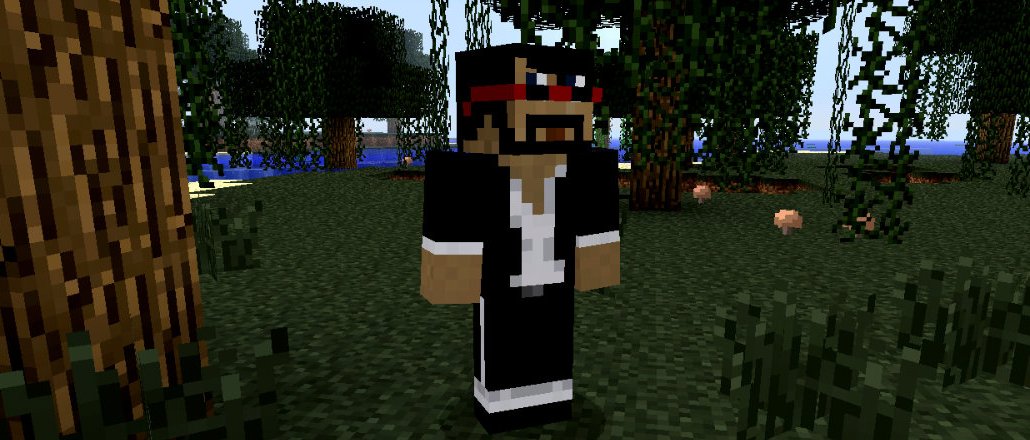Save 50% on a 3-month Digiday+ membership. Ends Dec 12.

As part of a new series, called “Know Your Influencer,” we will be spotlighting some of the top personalities on YouTube, Vine, Snapchat, Instagram and other online video platforms — and looking at the different ways they work with brands and publishers.

PewDiePie may be the biggest gamer on YouTube, but Jordan Maron is no slouch. Maron, known by his fans as “CaptainSparklez” (we’ll get to that), has 9 million subscribers across two channels on the video platform. He also posts content to Amazon’s live streaming gaming platform Twitch, where has more than 1.1 million followers.
An avid gamer, Maron uploads gameplay videos, particularly of the popular building-block game “Minecraft.” He also produces animations, parody music videos and other types of video content that mix gaming and comedy, and is affiliated with Maker Studios.
Now, Maron wants to use the fan base he has cultivated to start his own gaming company. He has partnered with Activision co-founder and gaming legend Howard Marks to launch XReal, which is raising capital by crowdfunding investments from fans and aspiring investors on StartEngine, a crowdfunding platform where Marks serves as executive chairman and managing partner.
Maron’s move to start his own company is representative of what many online video stars are doing in the hopes of diversifying their businesses beyond the “YouTube star” label. He has worked with brands, too, all of which we cover in the following interview, which has been lightly edited for clarity:
On the alias:
“It was a dare from another YouTuber friend of mine. My previous channel name wasn’t super-friendly for any other forms of media that don’t like swear words. When I started on YouTube, I didn’t think anything of it. By the time I was realizing this wasn’t the best name to go by, I didn’t have a substantial audience — 10,000 views per video — but hey, it might be a good idea to change it before it gets bigger. So my friend dared me to change it to ‘CaptainSparklez,’ and I was like, whatever, it’s probably not going anywhere, and now that’s what everyone calls me.”
On launching XReal:
“The idea was that if I’m playing games and uploading footage to my YouTube channel, the next logical step would be to try and make one of those games, so I’m playing my own game. Obviously, everyone who watches my channel also plays video games — it’d be a bit strange if they didn’t. So if I can put together a good game, hopefully they’d be interested in it.”
His fans were. XReal’s first game, “Fortress Fury,” has been downloaded more than 2 million times on iOS and Android since its launch in May.
On going the “crowd-equity” route:
“I think it presents a cool opportunity for people who play games and people who want to get more involved in the gaming space — now they have the ability to own a piece of one of these companies. Working with StartEngine, I also have the opportunity to reach bigger investors who aren’t necessarily looking to invest in companies on Kickstarter.”
Since XReal’s campaign launched on StartEngine on June 19, the company has collected $1.9 million in “reservations,” which are non-binding indications of interest. The company’s goal is $2 million and will start collecting once its filing is approved by the SEC.
On his approach to working with brands:
Maron favors integrations, which is easier when he works with video-game companies and plays one of their titles. Though sometimes an interesting opportunity will come up that he just can’t pass up — like his recent partnership with Pizza Hut, in which he created a pizza topped with pepperoni, bacon, salami and tomatoes that is sold in stores across the country.
“I put together a pizza with toppings of my choice, and then they hosted it on their sites. It was the CaptainSparkles Pizza. Part of the reason I did it was because of how absurd it sounds that a YouTuber has a pizza. It was something silly that I knew people were going to laugh at and enjoy. I’ve had thousands of people send tweets of the pizza after ordering it.”
On the challenges of working with brands:
“I stay away from: ‘Hey can you record a video where you sit in front of a camera and you talk about this brand thing here?’ It doesn’t add anything, and it doesn’t fit my normal content style.”
“It’s getting better as working with YouTubers becomes more commonplace. Most brands and ad agencies understand creators need to be able reserve their creative freedom; several years ago, it wasn’t like that.”
On his video platforms of choice:
“YouTube, because that’s where the audience is. For live content, I use Twitch. YouTube is also making a push in live, so I’ll be checking out the product to see what it has to offer. Obviously, I don’t think anyone questions that YouTube is the home for online video. You have Facebook saying they are doing more views than YouTube, except their metric for views is different. And without a way to monetize content on Facebook, it’s not something you can do as a way to sustain yourself.”
More in Media

Technology x humanity: A conversation with Dayforce’s Amy Capellanti-Wolf
Capellanti-Wolf shared insight on everything from navigating AI adoption and combating burnout to rethinking talent strategies.

How The Arena Group is rewriting its commercial playbook for the zero-click era
The company is testing AI-powered content recommendation models to keep readers moving through its network of sites and, in doing so, bump up revenue per session – its core performance metric.

Media Briefing: Why publishers are flocking to Substack
The Economist, The FT, The New Yorker and others have recently launched Substack newsletters, with varying strategies to find new audiences.





